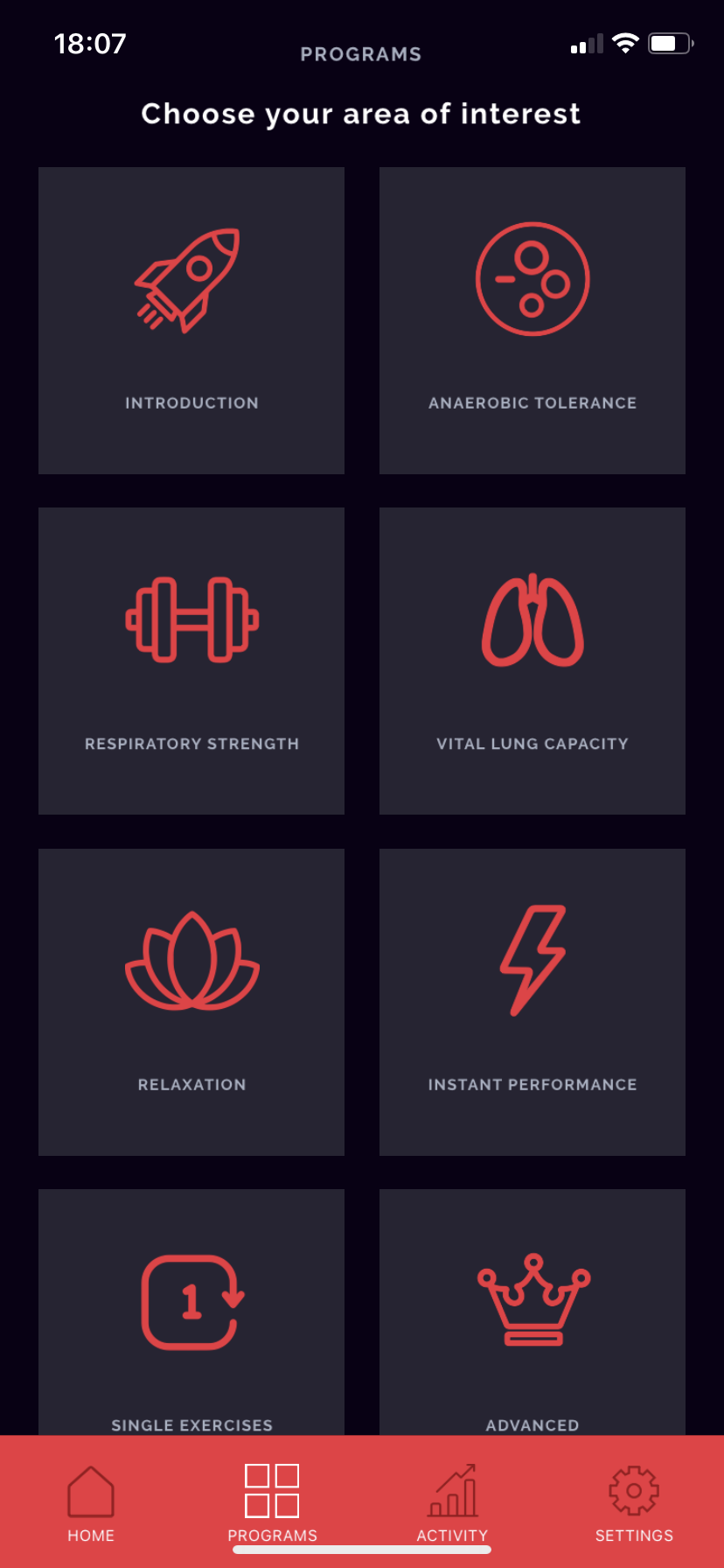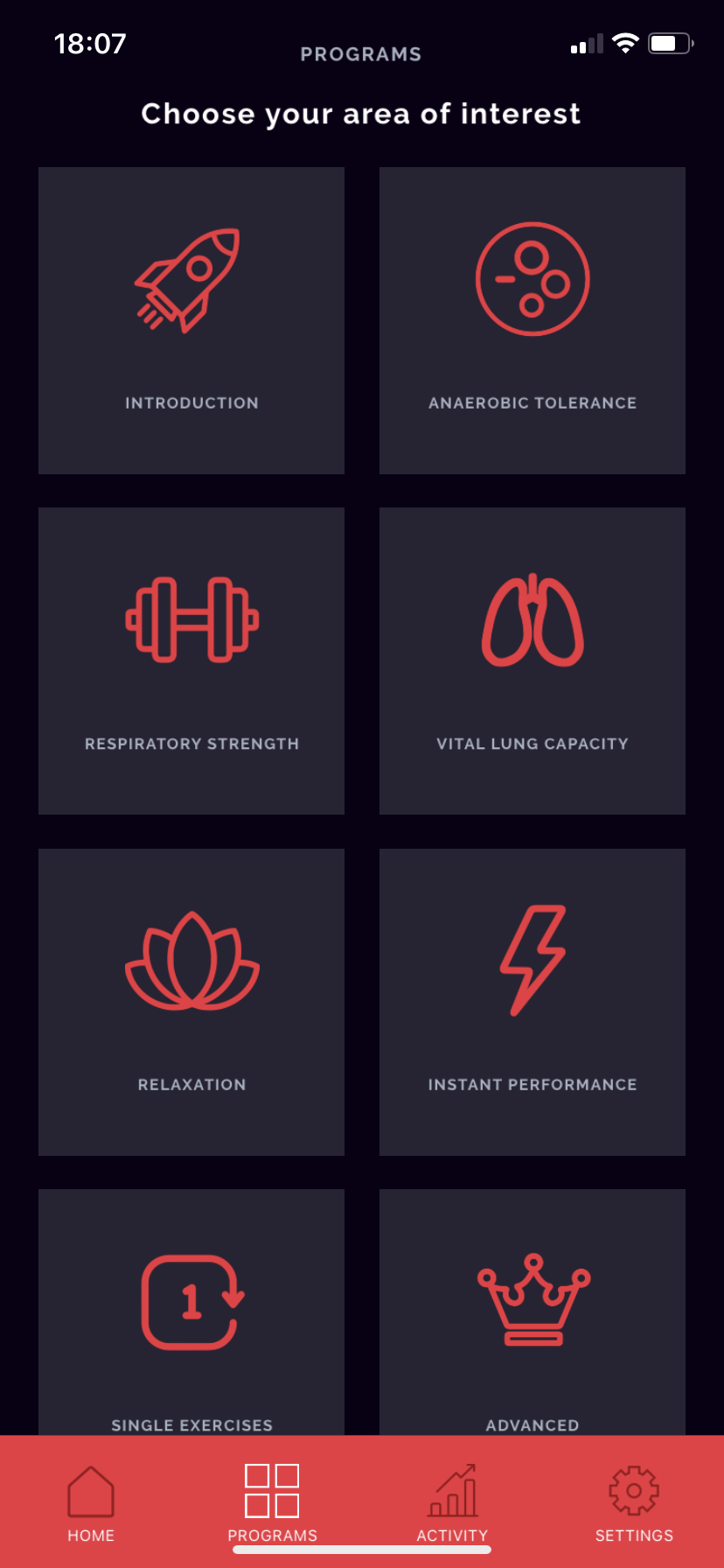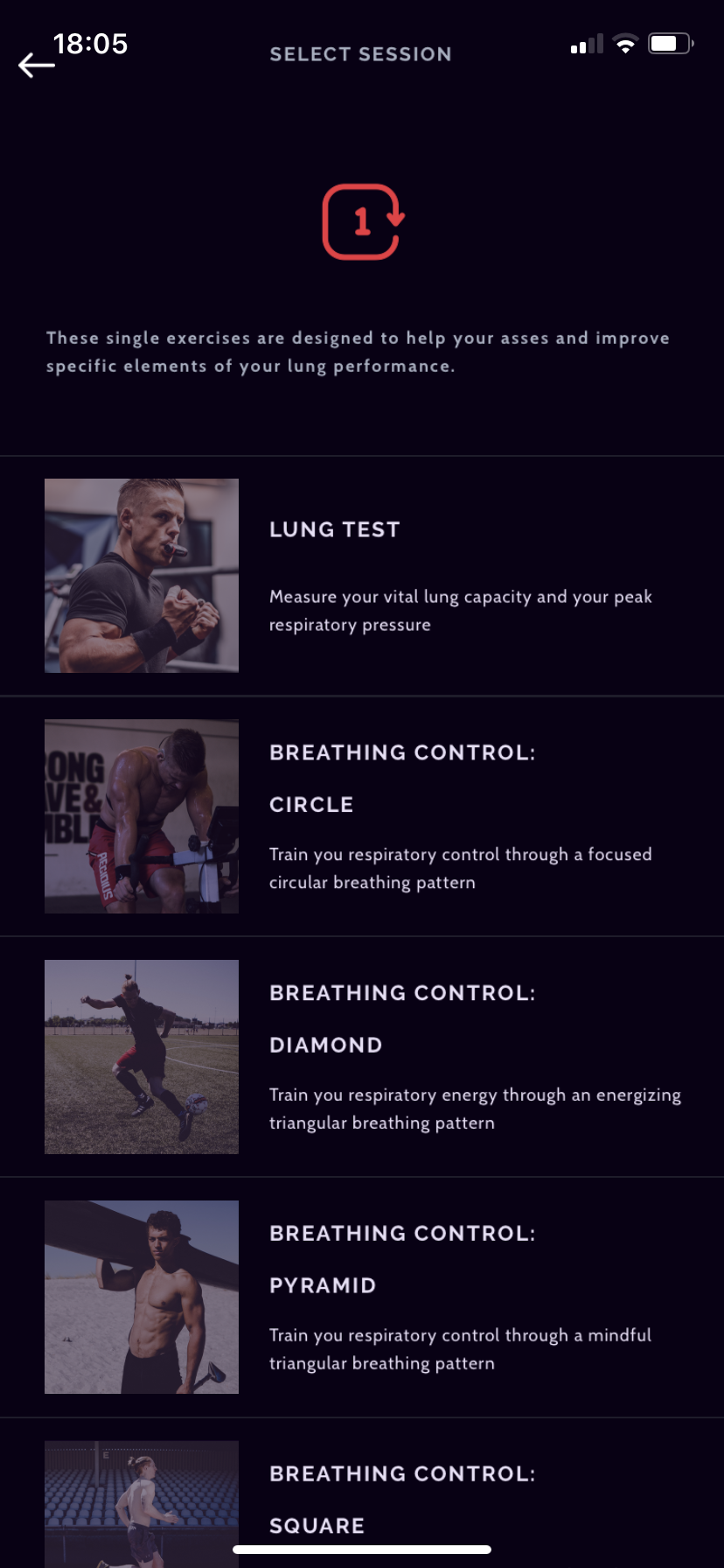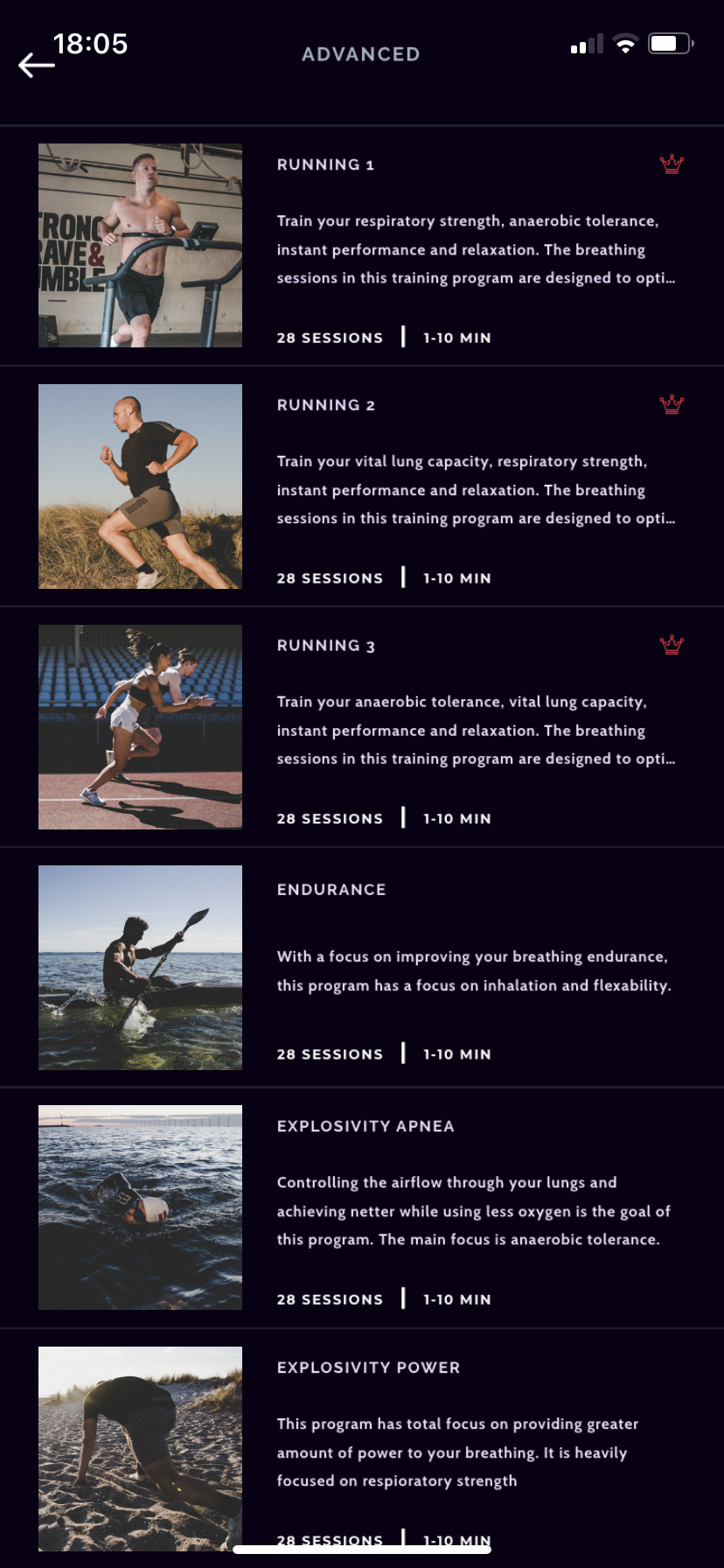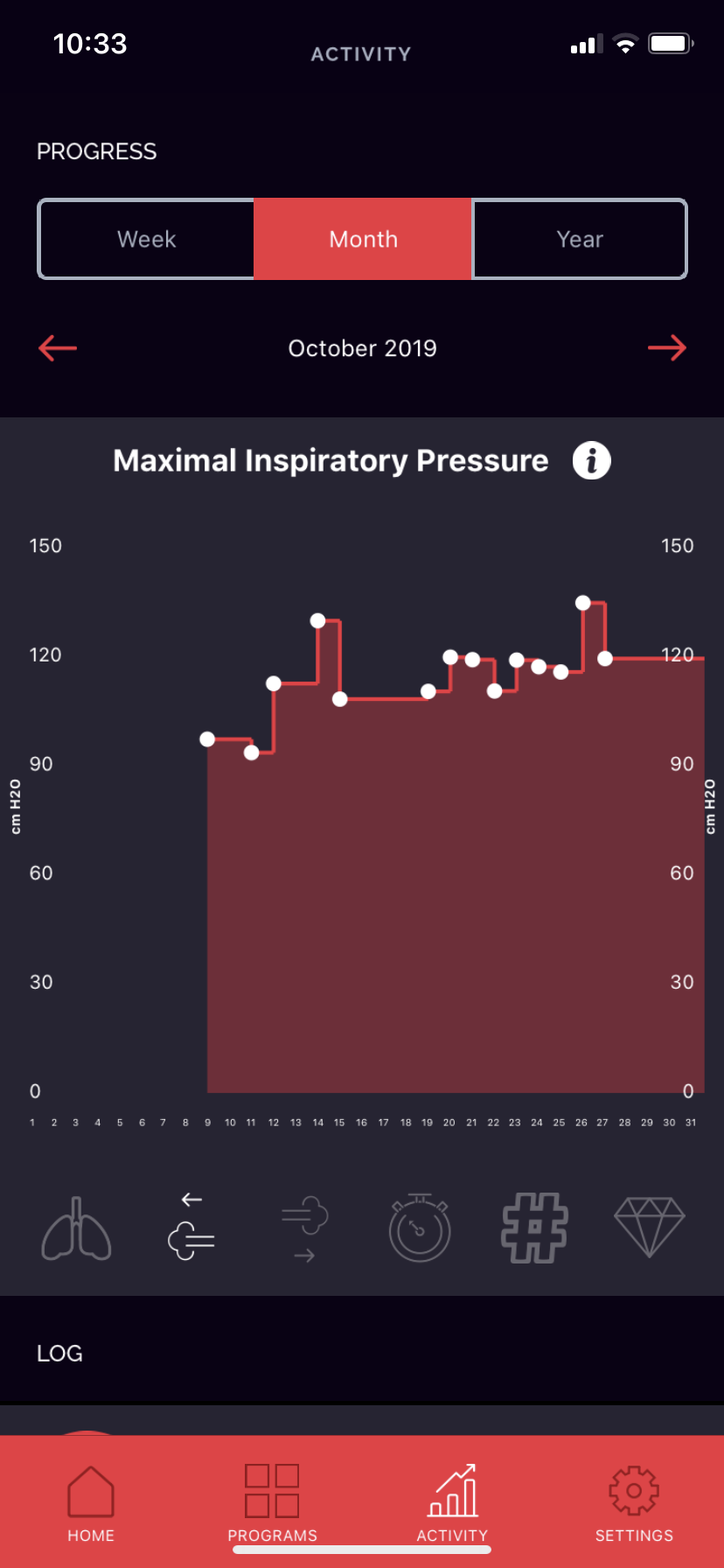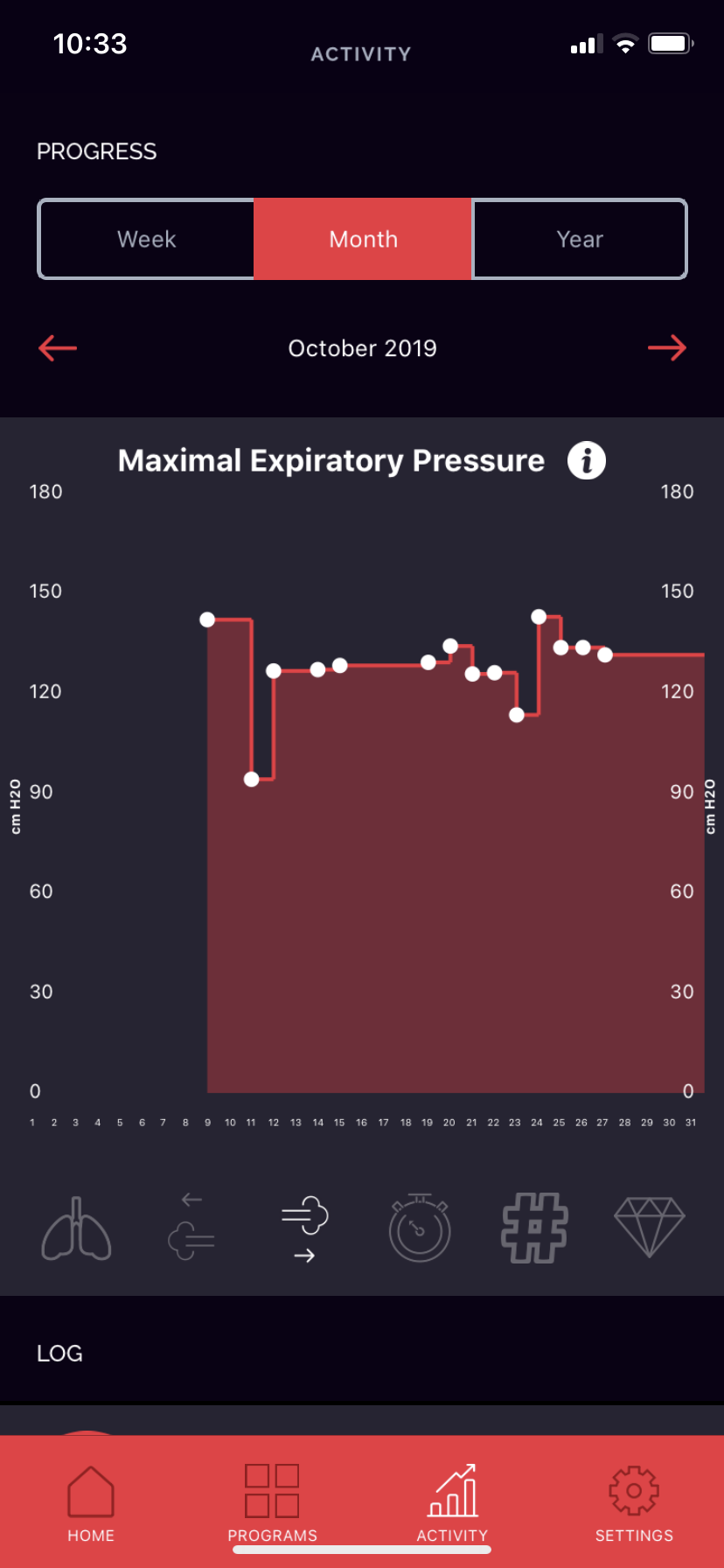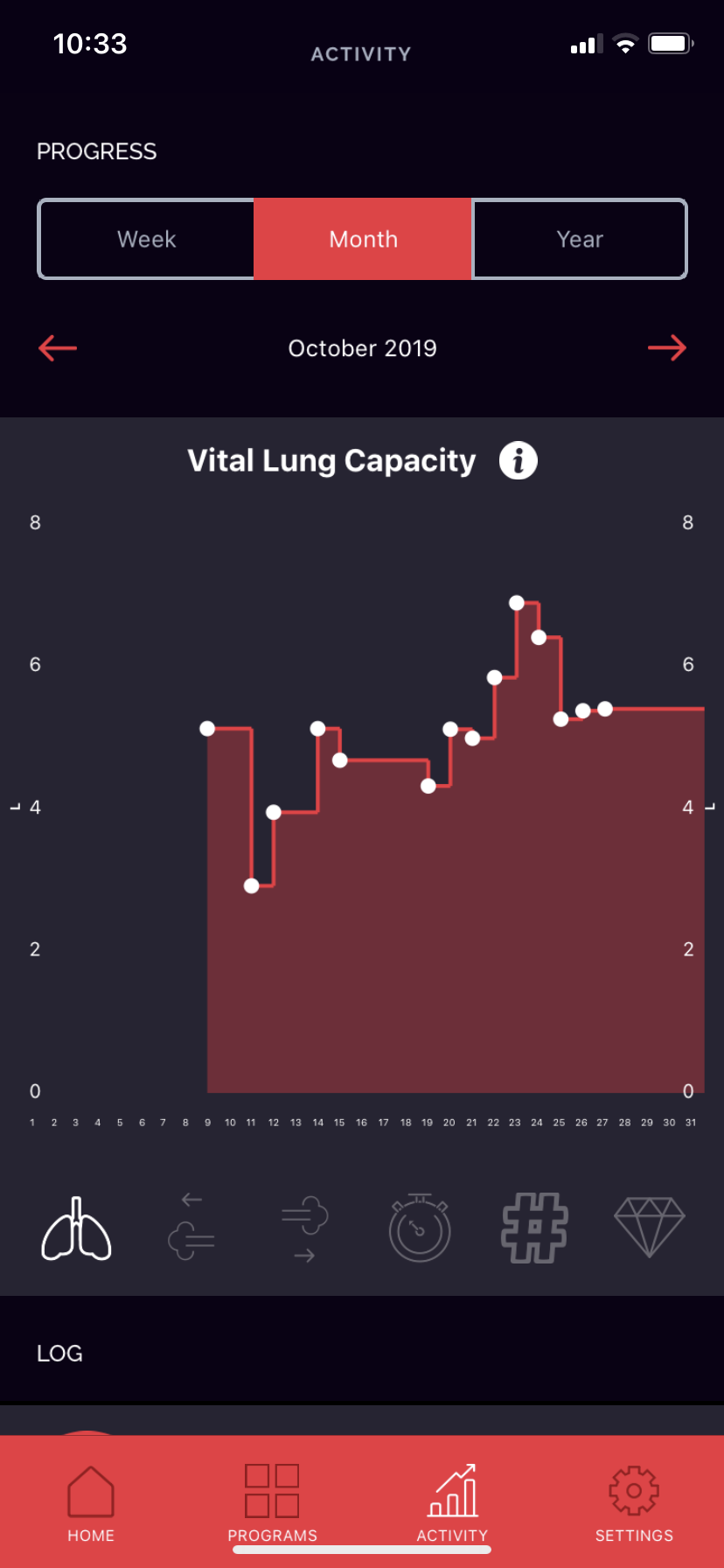Airofit Review - Breathing Trainer for Endurance Cyclists
Airofit Review
Sections
↓ Benefits of Respiratory Breathing Trainers
↓ Respiratory Trainer History
↓ Airofit Review - Initial Thoughts
↓ Initial Race Results With Airofit
↓ Can Airofit Improve VO2Max?
↓ Initial Respiratory Trainer Results With Airofit
↓ Empirical Results With Airofit
↓ Does Airofit Increase Lung Capacity?
↓ When To Train With Airofit
↓ 2024 Updated PR
↓ Airofit Respiratory Trainer Questions
As an endurance cyclist, I am always on the hunt for new ways to get faster. Whether it’s a new addition to the training regimen or new device, I’m always curious about way to get faster on the bike.
When I came across Airofit, I was excited to read about the science behind respiratory training and was very curious if it would work!
If I could improve my breath work for hard FTP or VO2Max intervals, this could have a big effect on my cycling performance. I rushed to give it a try!
Spoiler: it works, which is why I have an Airofit Discount Code link for you below. But read the whole article for my results!
Airofit Discount Code
https://www.airofit.com/Brendan?rfsn=6867665.8771ea3
Or you can use the code “Brendan” upon check out.
We’re always trying to stay on top of the latest tips and tricks to help make ourselves faster, and then we pass all, errr most, of them on to you. (Buy One Today With Coupon Code Link above. Don’t miss out!)
If you’ve been using a respiratory trainer, scroll to the bottom of my Frequently Asked Questions and let us know which ones you’ve had, so that we can add them to my Airofit Review.
When an advertisement for Airofit popped up on social media, I was curious. I did some digging, and contacted the company about some of the blogs that they posted.
If you haven’t checked out their basics on what to know about inspiratory training, read this one when you’re done, then continue on with the Airofit Review.
Airofit Review: Benefits of Respiratory Breathing Trainers
Stronger Breathing Muscles
Think of this as endurance work. With most of the focus on the diaphragm, endurance athletes can benefit from respiratory trainers because it will prolong the time until we fatigue, which prolongs the oxygen supply to motor muscles.
Better Anaerobic Tolerance
This was a biggest attraction to me, claiming an improvement in anaerobic tolerance, simply because going anaerobic SUCKS!!!! I’ll take any help that I can get.
Improved Vital Lung Capacity
This means that more air can get into your lungs to be utilized by the muscles. How? Stretching your diaphragm and intercostal muscles allows you to decrease the residual volume and increase the amount of usable air.
See Also: Bicycle Interval Training Guide
Respiratory Trainer History
So why haven’t we heard more about this? If the respiratory system can be trained, why aren’t we already doing this and why aren’t there more Airofit Reviews?
There aren’t a ton of Airofit Reviews because the software and hardware and finally catching up to each other!
Think about cycling power meters. The knowledge about endurance physiology came out, but there was no WKO4 or Training Peaks software. Just because the knowledge was out there, no one had built the hardware, software, or the diagnostics to make improvements.
Think about how hard it is to be the first person to make a power meter. And then, you have to be the first person to make the analysis software. That’s a massive undertaking!
Airofit was initially created for patients with asthma and COPD, so it wasn’t directed at us cyclists or endurance athletes. First comes the device, THEN they saw the need for the software. It was later used for classical musical singers, and years later, the founder used it on his sons who were competing in swim meets.
Check out the video here on more history.
Airofit Review - Initial Thoughts, Does Airofit Work
Initial Thoughts: Holy crap, this is HARD!
That’s what I kept thinking as I started diving into the exercises.
Honestly, I wasn’t sure where exactly to start, so I want to point this out: they are working on creating a better roadmap for use athletes to follow, but if you feel stuck, here’s what I did: I wanted to get a grasp on all of the different modules and types of breathing. I started with 2 minute sessions so that I could do about 5-10 exercises a day.
Once I got used to the breathing techniques, it was easy to see what I wasn’t good at. Train your weaknesses! I started focusing on Anaerobic Tolerance and Vital Lung Capacity. Once I started getting tired, I switched to Respiratory Strength, which is important for cyclists, and was just easier for me to complete when fatigued.
You might be overwhelmed by the options at first, but just like anything new, you’ll get into a groove and get used to it.
The initial programs are extremely challenging, and it made me think that I’d never get through them. You will improve, and you’ll see that Airofit works!
I would go two minutes, and almost be gasping for air, taking the device out of my mouth to catch my breath. Don’t worry! Just like in cycling, work on your weaknesses and they improve with time. I’m so stoked on my improvement with this respiratory trainer after just six weeks of training.
Does Airofit work? ABSOLUTELY!
Initial Race Results With Airofit
I wanted to start using this before The Tour of Southland in New Zealand, one of the biggest cycling races in the South Pacific. I had hopes that I could get some added benefit before this huge stage race, which was going to test me more than most races, over the course of seven days and nearly 600 race miles.
There will be another blog about this, but if you’re following me on Strava, most of you saw my heavy diet of threshold, threshold bursts, and VO2Max work, as I really wanted to try to make the break, and stick in one until the end of a stage.
While that didn’t happen, I was in the break all day on Stage 1, and won the Green Jersey and Most Combative award. The watts were amazing that day! For me at least; minuscule for the real pros.
First 45 minutes was 386W NP, until the rubber band finally snapped. I’ll get more into the story of the race in another post, but it was awesome to find myself in a 2 man break after a really tough start.
We then rode 57 miles, 2 hours 20mins at 365W NP! This was massive for me, only 10W off a lifetime power PR!
Caught by the lead group, I was then spit out, not having enough experience to get in the echelon and survive the crosswind.
Jumping to the last stage, Stage 7, I had an 18m time trial at 438W NP, 436W average. While I wasn’t aero enough at 6’5” and came in 31st place behind a load of hitters, I was so amazed at the power that day. This was on day 7, with almost 600 miles of racing in the legs!
I have no doubt that Airofit helped me achieve these results! But I noticed the results in my training beforehand as well.
Can Airofit Improve VO2Max?
This is one of the areas where Airofit really shines. I first started noticing Airofit in Threshold Burst work and on my classic 5 x 5 minute VO2Max intervals. The breathing was much more controlled, and I could actually feel myself breathing deeper, and more fully.
Can Airofit improve your VO2Max in terms of watts? That's really hard to say. Personally I find that the improved breathing allows me to stay calmer in really hard efforts, which in turn means I can put out more watts. The more often I can put out big watts, the faster I get over long periods of training time.
If one big aspect of VO2Max is related to how much oxygenated air we can inhale, and then how much oxygen gets pushed to our working muscles, intuition tells me that is why I was having such great performances after training with Airofit. The more we can train at harder intensities, the better we become over time, so I think it's fair to say that Airofit can improve your VO2Max, if you consistently train with it.
See Also: The Science of Cycling
Initial Respiratory Trainer Results With Airofit
I really want to break this into anecdotal evidence, and evidence based on the results from the respiratory trainer mobile app.
As I mentioned in the first sentence, initially everything was hard. I noticed that I easily got “caught up” in my breathing. It wasn’t always smooth or controlled.
There are 3 main modules that I’ve been focusing on:
Respiratory Strength
Anaerobic Tolerance
Vital Lung Capacity
Respiratory Strength is going to improve your exhale strength, massively. The training is focused on strengthening your diaphram so that you inhale and exhale more air in a given amount of time. The big factor for cyclists is that your muscle fatigue resistance will increase, so you’ll spend less energy breathing.
Anaerobic Tolerance will teach you how to exhale and then hold your breath; it’s more of hypoxic training when you consider it all. Studies show that prolonged breath-holding induces additional blood vessel growth, which significantly boosts muscle oxygenation. This prolongs the period in which you stay within aerobic metabolism, reducing lactic buildup, which allows you to perform at higher intensities for longer. Not to mention, hypoxia directly correlates to reduced heart rate, which then means increased lifetime, but more importantly, a greater ability to within extremely hard and extended efforts.
Vital Lung Capacity allows you to both inhale and exhale more more air, improving your body’s oxygenation.
This is where I anecdotally saw my first improvement. As I was railing 98-105% FTP efforts, my breathing was much easier; heart rate was lower; I felt in control of the efforts, rather than the efforts dictating my feelings.
It was an incredibly empowering feeling that really helped me push harder when the interval duration exceeded 15 minutes. I felt focused, confident, and controlled.
Max Aerobic, or VO2Max, efforts also seemed more manageable. There was less gasping for air, and when things got tough, I felt like I could breathe deeper and more fully. It was incredible!
There are other breathing trainer modules, such as Instant Performance, which are great for warming up, but the other 3 are the main respiratory training programs that I’ve undergone.
Below are some of the Advanced, Preprogrammed Modules that you can follow along with.
Empirical Results With Airofit
Does Airofit improve Lung Capacity?
As you can see from above, my Vital Lung Capacity has seriously improved! I went from 4L to averaging 5.5L, which correlates with WKO4 data.
I used to never be able to complete the breath holding exercises in Anaerobic Tolerance, and I just finished my first Intermediate, 4 minute, continuous session yesterday morning!
My training took a hit when I went to New Zealand, as I was so tired from the stage race. When you are competing, you want to go down one level (expert to intermediate, intermediate to beginner) and shorten the durations of each session, with more rest time. Just like in cycling; taper it.
I’m back at it, shooting for at least 20 minutes a day, and can’t wait to see what other results come from this!
Related Post: Lactigo - Topical Performance Sports Gel Review
When To Train With Airofit
Just so there is no confusion, the respiratory trainer is NOT used while cycling. You also do not do the training while doing chores around the house. The Airofit device requires 100% of your attention and physical capabilities.
I split my training to morning and afternoon. I try to avoid doing it at night when I’m already tired. I break my sessions into 3 x 4m, in order to hit 24m in a day. Sometimes I have to cut it short.
2024 Updated PR
VO2Max with Hard Finish
Before I share with my PR's, I must admit...I was slacking on Airofit in 2023. For those that followed along, I wasn't planning on racing much, and was going through some life things...the little things that help me out so much with my training and racing, like Airofit, went to the wayside.
I made a comeback in June, and started getting back after all of those little details. The huge difference that I notice with my performance is when I stop using Airofit. My threshold efforts become harder and more labored, and I'm panting MUCH more during VO2Max efforts. I go back on the train, and in about six weeks I was feeling back to normal. No more fighting the breathing during hard training or KOM efforts!
Which brings us to the first big PR which was actually from the summer of 2023 where I was targeting a local KOM on the Blue Ridge Parkway that was just over 8 minutes in duration.
It's a relatively smooth 6% grade uphill that I knew I would need to have around 6w/kg for the 8 minute effort (around 460-480W +- )
I went into the effort really focused on my breathing -- in through the nose, out through the mouth, stead and flowing. When I am cognizant of my breathing, I know that I pant a LOT less!
Airofit has not only helped me breathe more efficiently and deeper, but it has trained me to stay calm when the workout or race is extremely intense.
I had some great pacing and when I could see myself within reach of the KOM, I gave everything that I had! After riding at VO2Max for over 7 minutes, I could STILL finish the effort off strong with 35 seconds at 670W!
VO2Max TTE with Hard Start
The second PR update that I'm really proud of was a VO2Max workout that I use from time to time that is a bit more Fartlek in nature....just go hard above my Maximal Aerobic Power until I can't any longer.
At this point in time I was targeting more than 480W.
Same scenario, focus on the breathing and avoid panting as much as possible! Deep breaths in through the nose, and big exhales out through the mouth. I just kept thinking of my Airofit Inhale Strength sessions, and it helped to alleviate the anxious feeling of knowing how hard I was going, almost waiting for the pain to begin.
I paced this effort differently since it was a time to exhaustion effort, with a much harder start -- the first 90 seconds at 545W, the next 3.5 minutes at 487W, and hanging on for dear life at an average of 440W for the remainder.
So thankful to Airofit! The breathing was on point the entire effort, and it was more about bringing the muscular strength to the table this day than anything else!
Airofit Respiratory Trainer Questions
Some terms that come up in the app and my questions are in BOLD. Airofit’s answers are in italics.
Breathe Normally: yes, just inhale or exhale as you would in everyday life.
What Level Should I Start At With Airofit: If you are an athlete, start at medium, and if you can get through 2 minute sessions, start extending them. You want to hit 5-10 minutes PER SESSION.
Here’s what Airofit had to say when I inquired on session durations:
You can do anything you’d like - you can do all the same exercise or you can do a few different exercises in shorter periods. Whatever you feel more comfortable with! 💪
At the beginning, we recommend taking a small break after 3 min though.
And if you feel after some time, that 5-10 min is too easy, you can also knock that time up a bit!
They are working on a more formalized program setting, so keep your eyes out for that! Here’s another explanation!
Regarding the progression - we're now working on implementing the buildup process. The idea is that you'd start training with Respiratory strength at beginner level, for 3 minutes. Then do the same with vital capacity, then anaerobic tolerance.
After, you'd do the same sequence on intermediate, for 5 min, then expert for 7.
The longer your sessions, the more fatigued the corresponding muscles, the more it's compensated by muscle tissue growth.
So similar to any other muscle group, really. But then again, if you do feel tired after 5 minutes of vital capacity, you can do another 5 of strength, if that feels easier
In Vital Lung Cap, when it says “let go and freely let air in” does it mean inhale? Because then after that it tells you to inhale. When it prompts you before i almost need to take device off to let air in.
After you have squeezed out all the air in your lungs, your intercostal muscles are contracted to 'collapse' your chest and create almost a vacuum in your lungs. When you inhale passively, it means you relax your breathing muscles and let air into your lungs without inhaling actively. Once air has freely flowed into your lungs, you can inhale actively
This is probably a very strange example, but imagine if you're at that state where your lungs are completely empty, and you suddenly died. Your muscles would relax and air would flow into your lungs passively, without you actually breathing in. Maybe try even holding your nose closed. Your diaphragm should 'drop' back into its relaxed state, sucking air in automatically.
Vital lung capacity program increases the flexibility of the diaphragm. During this 'vacuum', your diaphragm is at its most extended state, and therefore stretches it. This helps to decrease the residual volume of your lungs.
During your day to day breathing you use only your tidal volume. So once you have exhaled, there is still quite a lot of air in your lungs. For it to be there, you don't need to inhale it actively. That's just the natural state of your chest cavity.
So even though you're inhaling, it shouldn't be a conscious inhale, but just due to your diaphragm relaxing.
With the next update, this program is gonna become harder - you'll need to hold your breath with empty lungs longer, depending on the difficulty level!
Never breathe through your nose when using the respiratory trainer. That’s cheating!
The nose plug - staying in control of your nose/mouth breathing is a part of it. Even though nose breathing is more beneficial for you normally, training through your mouth is more efficient and convenient. That being said, without a nose plug you are in control of your airways and that's a good thing.
Do we re-oxygenate or catch our breaths better by one deep breath or shorter faster ones? The latter seems true but not intuitive to my thinking?
When it comes to re-oxygenation, I believe it's best to take deeper breaths. The alveoli concentration is higher on the lower part of your lungs, so getting air in all the way will help with better oxygen absorption.
The purpose of the program is to get your muscles used to an oxygenless environment - like they would be if you actually go for a 100% output for as long as you can.
So in theory, the less oxygen in your body during the breath-holding, the more beneficial the exercise. So you're not supposed to be comfortable. I'd rather push it to where I struggle, so I can also see the difference a few weeks in. In theory, if holding your breath is uncomfortable now, it should get easier with time.
I honestly feel like this has helped my breathing a lot during threshold riding. Even if I haven’t made any physiological adaptations yet it has no doubt helped me be more controlled with my breath and be in tune with fully filling my lungs. It’s awesome!
That's really nice to hear! One of the reasons why respiratory training works so quick is that you activate your nervous system, which allows you stay in control of your muscles, especially if you haven't targeted the breathing muscles before.
What is best for cycling? Anaerobic and lung capacity?
Anaerobic tolerance training is made to prolong the period of time at which you can perform at 100% power output. For most people this period is around 10 seconds long. That's why the pace at which you run 100m is not the same at 200m.
By training your apnea, you can train your muscles to get used to the oxygenless environment, and not be affected by lactate and ions so much. So you can prolong the period to say 12 seconds. In theory this means you would be able to squeeze a few more reps in weight training or start the finish burst sooner than others.
Otherwise, this will not affect the rest of your performance too much, if you do long distance cycling, instead of 200m track sprint, for example.
Lung capacity will definitely be very beneficial, since you will move out more residual volume and be able to replace it with fresh, oxygenated air.
Also, inspiratory strength is crucial for cyclists. Since your riding position means you kind of squeeze your abdominal cavity, many cyclists utilize chest breathing instead of using their diaphragm. The diaphragm contracts during an inhale, so it's important to activate the muscle in the first place and then work on its strength, speed and efficiency.
THANK YOU AIROFIT!
Purchase yours here with coupon code for 10% off!
Hopefully you enjoyed this Airofit Review, with empirical, anecdotal, and race performance evidence that Airofit works well! Share your thoughts about respiratory trainers and I’ll add them to my Airofit Review!
If you enjoy these posts, will you please share with one cycling friend? We greatly appreciate it!
Thank you to everyone for your comments and questions, let’s continue to foster a constructive conversation about cycling; let’s Evolve Our IQ Together.
Are you ready to become a stronger and faster version of your current self? Contact me if that sounds like a transformation you want to see happen.
I was overweight and feeling like a blob before I found cycling. Things have changed in my life and I am so grateful for that; I’d love to help you with a cycling training plan to reach as many of your goals as possible, no matter how small or grandiose you think they are.
We are helping a vast array of cyclists train for their next big goal, join the EVOQ.ARMY! We have a wide range of cycling workouts to help you, all customized to your needs.
No better time than today to GET STARTED!
Let’s Crush,
Brendan
Email me with questions or comment below! Please share with one friend if you like this post!
Brendan@EVOQ.BIKE
About Brendan
EVOQ Training Plans
Check out our coach built training plans.



